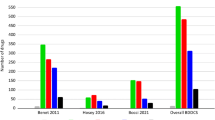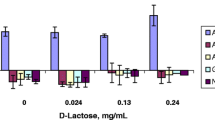Abstract
We recommend that regulatory agencies add the extent of drug metabolism (i.e., ≥ 90% metabolized) as an alternate method in defining Class 1 marketed drugs suitable for a waiver of in vivo studies of bioequivalence. That is, ≥ 90% metabolized is an additional methodology that may be substituted for ≥ 90% absorbed. We propose that the following criteria be used to define ≥ 90% metabolized for marketed drugs: Following a single oral dose to humans, administered at the highest dose strength, mass balance of the Phase 1 oxidative and Phase 2 conjugative drug metabolites in the urine and feces, measured either as unlabeled, radioactive labeled or nonradioactive labeled substances, account for ≥ 90% of the drug dosed. This is the strictest definition for a waiver based on metabolism. For an orally administered drug to be ≥ 90% metabolized by Phase 1 oxidative and Phase 2 conjugative processes, it is obvious that the drug must be absorbed. This proposal, which strictly conforms to the present ≥ 90% criteria, is a suggested modification to facilitate a number of marketed drugs being appropriately assigned to Class 1.
Similar content being viewed by others
Abbreviations
- BCS:
-
Biopharmaceutics Classification System
- BDDCS:
-
Biopharmaceutics Drug Disposition Classification System
REFERENCES
G. L. Amidon, H. Lennernäs, V. P. Shah, and J. R. Crison. A theoretical basis for a biopharmaceutics drug classification: the correlation of in vitro drug product dissolution and in vivo bioavailability. Pharm. Res. 12:413–420 (1995).
Food and Drug Administration, Guidance for Industry: Waiver of in vivo Bioavailability and Bioequivalence Studies for Immediate-Release Solid Oral Dosage Forms Based on a Biopharmaceutics Classification System. Food and Drug Administration, Rockville, MD, 2000. Retrieved from www.fda.gov/cder/guidance/index.htm
J. E. Polli, L. X. Yu, J. A. Cook, G. L. Amidon, R. T. Borchardt, B. A. Burnside, P. S. Burton, M. -L. Chen, D. P. Conner, J. Faustino, A. A. Hawi, A. S. Hussain, H. N. Joshi, G. Kwei, V. H. L. Lee, L. J. Lesko, R. A. Lipper, A. E. Loper, S. G. Nerurkar, J. W. Polli, D. R. Sanvordeker, R. Taneja, R. S. Uppoor, C. S. Vattikonda, I. Wilding, and G. Zhang. Summary Workshop Report: Biopharmaceutics Classification System–Implementation Challenges and Extension Opportunities. J. Pharm. Sci. 93:1375–1381 (2004).
H. Lennernas, O. Ahrenstedt, R. Hallgren, L. Knutson, M. Ryde, and L. Paalzow. Regional jejunal perfusion, a new in vivo approach to study oral drug absorption in man. Pharm. Res. 9:1243–1251 (1992).
H. Lennernäs, L. Knutson, T. Knutson, L. Lesko, T. Salomonson, and G. L. Amidon. Human effective permeability data for atenolol, metoprolol and carbamazepine to be used in the proposed biopharmaceutical classification for IR-products. Pharm. Res. 12:S295 (1995).
H. Lennernas, L. Knutson, T. Knutson, L. Lesko, T. Salomonson, and G. L. Amidon. Human effective permeability data for furosemide, hydrochlorothiazide, ketoprofen and naproxen to be used in the proposed biopharmaceutical classification for IR-products. Pharm. Res. 12:S396 (1995).
H. Lennernäs, Ö. Ahrenstedt, and A-L. Ungell. Intestinal drug absorption during induced net water absorption in man: A mechanistic study using antipyrine, atenolol and enalaprilat. Br. J. Clin. Pharmacol 37:589–596 (1994).
D. Nillson, U. Fagerholm, and H. Lennernäs. The influence of net water absorption on the permeability of antipyrine and levodopa in the human jejunum. Pharm. Res. 11:1541–1545 (1994).
U. Fagerholm, L. Borgström, Ö. Ahrenstedt, and H. Lennernäs. The lack of effect of induced net fluid absorption on the in vivo permeability of terbutaline in the human jejunum. J. Drug Targeting 3:191–200 (1995).
D. Nilsson, U. Fagerholm, and H. Lennernäs. The influence of net water absorption on the permeability of antipyrine and levodopa in the human jejunum. Pharm. Res. 11:1540–1547 (1994).
R. Sandstrom, A. Karlsson, L. Knutson, and H. Lennernäs. Jejunal absorption and metabolism of R/S-verapamil in humans. Pharm. Res. 15:856–862 (1998).
N. Takamatsu, L. S. Welage, N. M. Idkaidek, D. Y. Liu, P. I. Lee, Y. Hayashi, J. K. Rhie, H. Lennernäs, J. L. Barnett, V. P. Shah, L. Lesko, and G. L. Amidon. Human intestinal permeability of piroxicam, propranolol, phenylalanine, and PEG 400 determined by jejunal perfusion. Pharm. Res. 14:1127–1132 (1997).
N. Takamatsu, O. N. Kim, L. S. Weage, N. M. Idkaidek, Y. Hayashi, J. Barnett, R. Yamamoto, E. Lipka, H. Lennernäs, A. Hussain, L. Lesko, and G. L. Amidon. Human jejunal permeability of two polar drugs: cimetidine and ranitidine. Pharm. Res. 18:742–744 (2001).
X. Cao, S. T. Gibbs, L. Fang, H. A. Miller, C. P. Landowski, H-C. Shin, H. Lennernäs, Y. Zhong, G. L. Amidon, L. X Yu, and D. Sun. Why is it challenging to predict intestinal drug absorption and oral bioavailability in human using rat model. Pharm. Res. 23:1675–1686 (2006).
C-Y. Wu, and L. Z. Benet. Predicting drug disposition via application of BCS: transport/absorption/elimination interplay and development of a Biopharmaceutics Drug Disposition Classification System. Pharm. Res. 22:11–23 (2005).
T. Takagi, C. Ramachandran, M. Bermejo, S. Yamashita, L. X. Yu, and G. L. Amidon. A provisional biopharmaceutical classification of the top 200 oral drug products in the United States, Great Britain, Spain and Japan. Mol. Pharm. 3:631–643 (2006).
N. A. Kasim, M. Whitehouse, C. Ramachandran, M. Bermejo, H. Lennernäs, A. S. Houssain, H. E. Junginger, S. A. Stavchansky, K. K. Midha, V. P. Shah, and G. L. Amidon. Molecular properties of WHO essential drugs and provisional biopharmaceutical classification. Mol. Pharm 1:85–96 (2004).
U. Fagerholm, M. Johansson, and H. Lennernäs. Comparison between permeability coefficients in rat and human jejunum. Pharm. Res. 13:1336–1342 (1996).
S. Tolle-Sander, and J. E. Polli. Method considerations for Caco-2 permeability assessment in the Biopharmaceutics Classification System. Pharmacop. Forum 28:164–172 (2002).
J. E. Polli, and M. J. Ginski. Human drug absorption kinetics and comparison to Caco-2 monolayer permeabilities. Pharm. Res. 15:47–52 (1998).
K. A. Lentz, J. Hayashi, L. J. Lucisano, and J. E. Polli. Development of a more rapid, reduced serum culture system for Caco-2 monolayers and application to biopharmaceutics classification system. Int. J. Pharm. 200:41–51 (2000).
S. Sahin, J.M. Custodio and L.Z. Benet. Transepithelial transport of verapamil across Caco-2 cell monolayers. AAPS Journal. 2007; 9(S2). Abstract T3480. Available from http://www.aapsj.org/.
L. X. Yu, G. L. Amidon, J. E. Polli, H. Zhao, M. U. Mehta, D. P. Conner, V. P. Shah, L. J. Lesko, M. L. Chen, V. H. Lee, and A. S. Hussain. Biopharmaceutics classification system: the scientific basis for biowaiver extensions. Pharm. Res. 19:921–925 (2002).
M. Yazdanian, K. Briggs, C. Jankovsky, and A. Hawi. The “high solubility” definition of the current FDA Guidance on Biopharmaceutical Classification System may be too strict for acidic drugs. Pharm. Res. 21:293–299 (2004).
E. Rinaki, A. Dokoumetzidis, G. Valsami, and P. Macheras. Identification of biowaivers among Class II drugs: theoretical justification and practical examples. Pharm. Res. 21:1567–1572 (2004).
U. Fagerholm. Evaluation and suggested improvements of the Biopharmaceutics Classification System (BCS). J. Pharm. Pharmacol. 59:751–757 (2007).
H. H. Blume, and B. S. Schug. The biopharmaceutics classification system (BCS): class III drugs - better candidates for BA/BE waiver? Eur. J. Pharm. Sci. 9:117–121 (1999).
World Health Organization, Multisource (Generic) Pharmaceutical Products: Guidelines on Registration Requirements to Establish Interchangeability. WHO Technical Report Series, No. 937,2006, Annex 7, 347–390 (2006).
Y. Zhang, and L. Z. Benet. The gut as a barrier to drug absorption. Clin. Pharmacokinet 40:159–168 (2001).
S. Winiwarter, F. Ax, H. Lennernäs, A. Hallberg, C. Pettersson, and A. Karlén. Hydrogen bonding descriptors in the prediction of human in vivo intestinal permeability. J. Molec. Graphics Model 21:273–287 (2003).
ACKNOWLEDGEMENTS
This work was supported in part by NIH Grant GM 075900.
Author information
Authors and Affiliations
Corresponding author
Additional information
Opinions expressed in this report are those of the authors. For those authors affiliated with regulatory agencies (DMB & LXY) the opinions do not necessarily reflect the views or policies of the regulatory agencies.
Rights and permissions
About this article
Cite this article
Benet, L.Z., Amidon, G.L., Barends, D.M. et al. The Use of BDDCS in Classifying the Permeability of Marketed Drugs. Pharm Res 25, 483–488 (2008). https://doi.org/10.1007/s11095-007-9523-x
Received:
Accepted:
Published:
Issue Date:
DOI: https://doi.org/10.1007/s11095-007-9523-x




